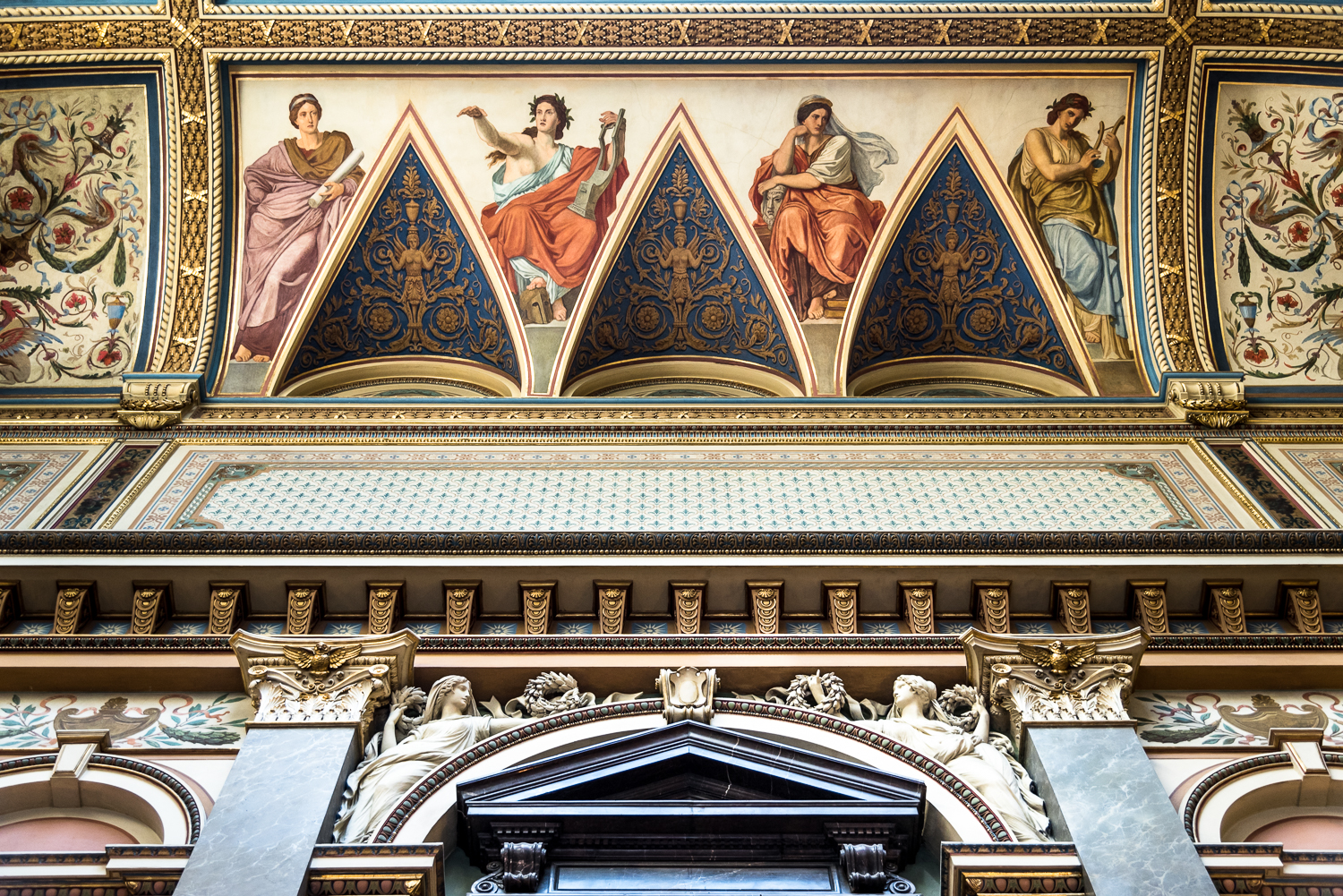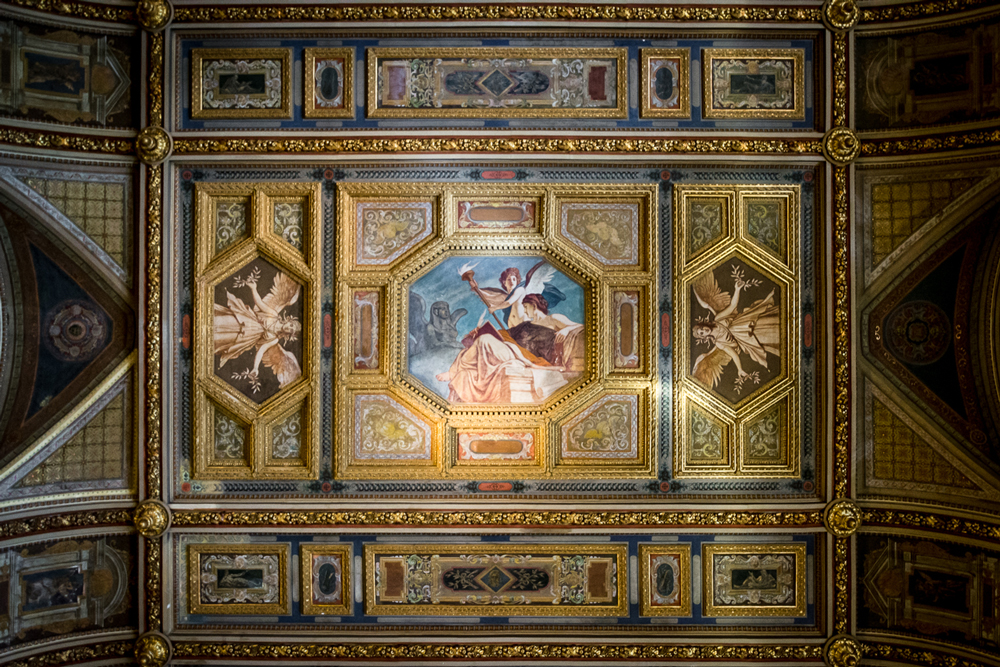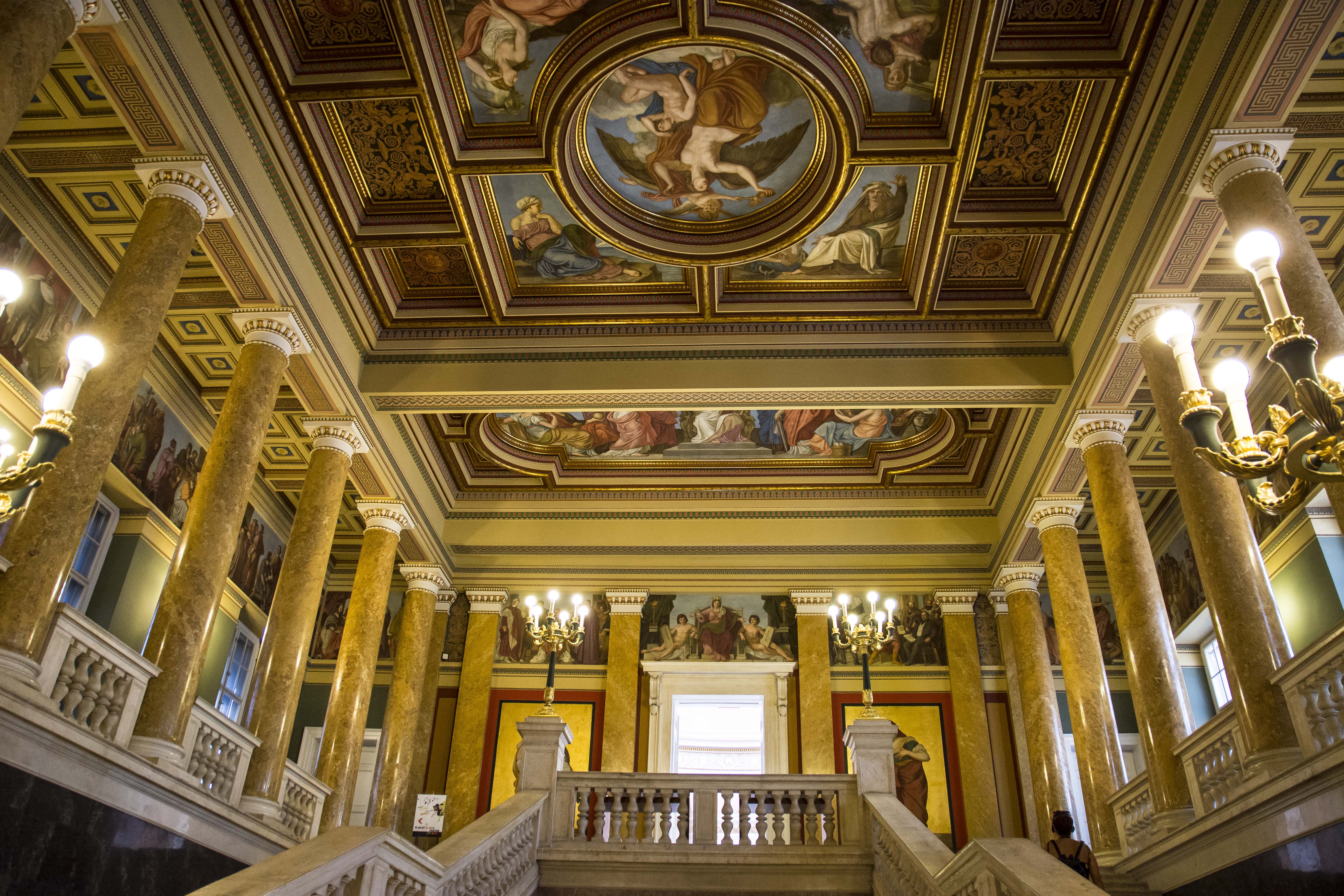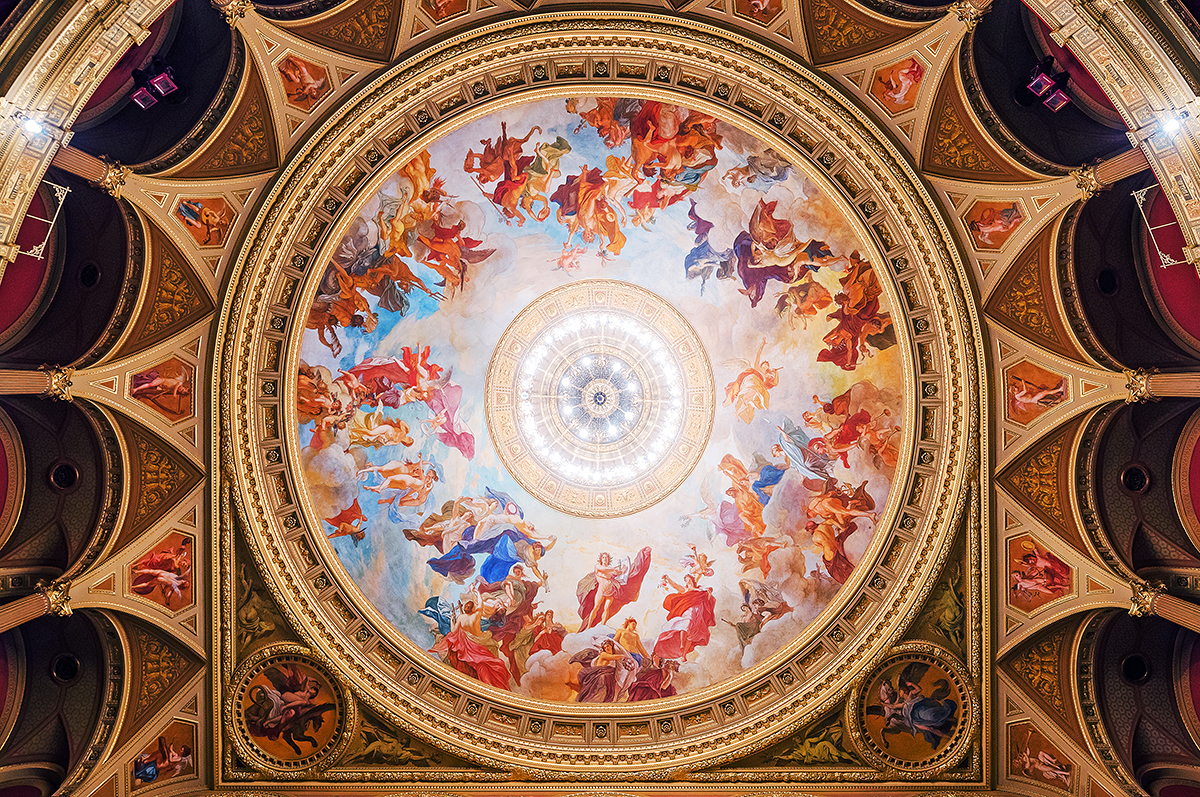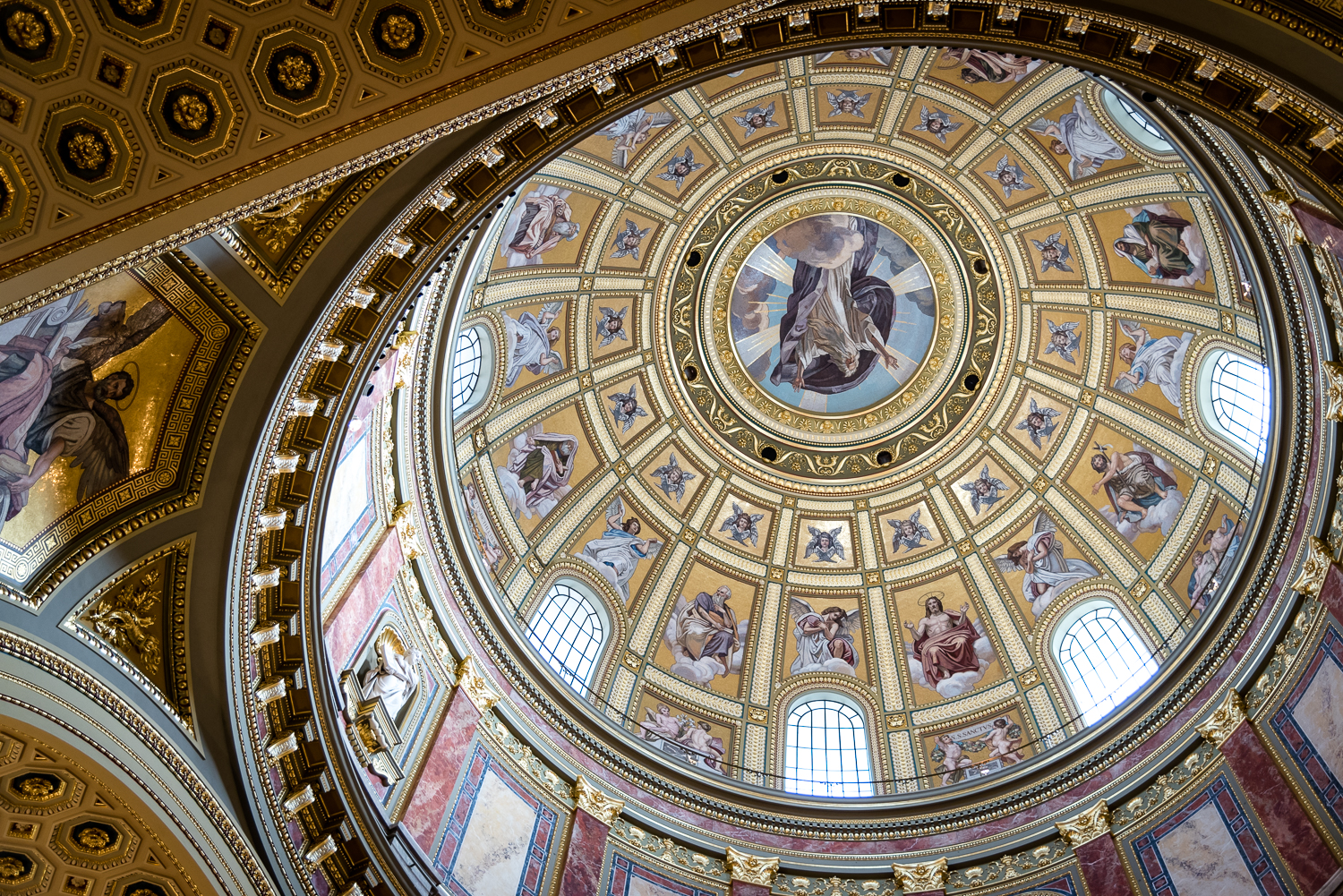2/6
ELTE University Library
The first continuously operating
Hungarian university library was moved to today’s Ferenciek tere in 1784, but the building hiding
the Károly Lotz frescoes was not completed until 1876. The exam period sees frequent library visits, and the reading room should simultaneously inspire learning and divert attention. Looking up at the
huge windows, you certainly can’t take your eyes off the beautiful frescoes
lined with female figures symbolising the sciences and the arts. In addition to
these examples, Lotz’s work covers the tympanum, the
half-moon feature above the door, on the main façade, with carved coats of arms
and wise men, just as the lunettes on the side walls of the foyer were made
according to his designs, with the faces of ancient thinkers surrounded by a
male and a female nude.
3/6
Hungarian Academy of Sciences
As early as 1825, the great pioneer Count István Széchenyi argued in favour of cultivating the Hungarian language and founding a Hungarian scientific society, but it was not until 1865 that the Academy received its headquarters. The beautiful Neo-Renaissance building on the banks of the Danube was designed by Miklós Ybl, and like most of Budapest’s main public buildings unveiled during the Dual Monarchy, Károly Lotz worked on the frescoes in its ceremonial hall. When the Academy building was opened, its halls were still rather bleak. Having pointed this out, Baron József Eötvös duly proposed it being painted. However, it took many years from proposal to actual implementation, and the monumental concept presenting Hungarian history was limited to one of the most important moments in Hungarian cultural history. Over the years, it has emerged that each picture should have been made by different painters, so the names of Munkácsy and Benczúr were also mentioned, but the committee abandoned this idea and entrusted the work to Károly Lotz.
4/6
Hungarian National Museum
Overlooking
its newly revamped gardens,
the National Museum was designed by Mihály Pollack, who commissioned Károly Lotz to create the frescoes
above the main staircase. So superbly were they carried out, Lotz then received
a plethora of orders around town. Initially working with Mór Than, Lotz completed
these allegorical frescoes in 1875, depicting the great events in the history
of the nation and the spiritual merits of mankind. The ceiling decoration, a
frieze running around the top of the main walls, is a joint work by Lotz and
Than, the allegorical figures on the side walls by Than alone.
5/6
Opera House
The Opera House,
opened in 1884, is one of the most beautiful works by Miklós Ybl and a
superb example of Hungarian Neo-Renaissance architecture. Its richly
decorated interiors were created by the finest artists of the day, but the huge
work by Károly Lotz, The Glorification of Music, more than four metres in diameter,
is clearly the most striking element. You can admire the depiction of the gods
of Mount Olympus over and over, still you notice something new about those listening
to the music of Apollo. As well as the dome fresco, all of the paintings in the
auditorium were created by Lotz.
6/6
St Stephen's Basilica
St Stephen’s Basilica was designed
by three architects and built over the course of 50 years. This monumentality can
also be perceived in the interior. Looking up at the dome, God himself looks back down, surrounded by figures of angels,
prophets and evangelists. In addition to the dome painting, Lotz also made the pillar mosaics and the artwork for the arches. This shows four
scenes from the life of Christ, from birth to resurrection.
